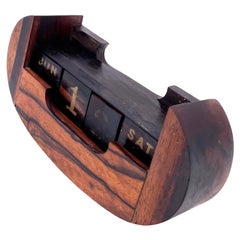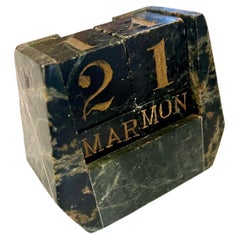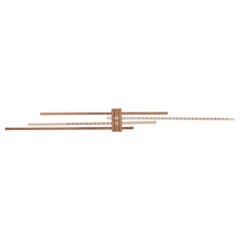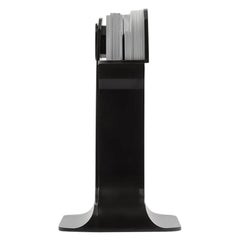Enzo Mari Calendar
20th Century North American Scandinavian Modern More Desk Accessories
Rosewood
20th Century North American Mid-Century Modern More Desk Accessories
Marble
Recent Sales
21st Century and Contemporary Italian Modern More Desk Accessories
Wood
21st Century and Contemporary Italian Modern More Desk Accessories
PVC
21st Century and Contemporary Italian Modern More Desk Accessories
PVC
21st Century and Contemporary Italian Modern More Desk Accessories
PVC
21st Century and Contemporary Italian Modern More Desk Accessories
PVC
21st Century and Contemporary Italian Modern More Desk Accessories
Aluminum
21st Century and Contemporary Italian Modern More Desk Accessories
Aluminum
21st Century and Contemporary Italian Modern More Desk Accessories
Aluminum
21st Century and Contemporary Italian Modern More Desk Accessories
Aluminum
21st Century and Contemporary Italian Modern More Desk Accessories
Aluminum
21st Century and Contemporary Italian Modern More Desk Accessories
Aluminum
21st Century and Contemporary Italian Modern More Desk Accessories
Aluminum
Late 20th Century Mid-Century Modern More Desk Accessories
Plastic
Vintage 1960s Italian More Desk Accessories
Acrylic
Vintage 1960s Italian Mid-Century Modern More Desk Accessories
Plastic
Vintage 1960s Italian Desk Accessories
People Also Browsed
21st Century and Contemporary Swedish Mid-Century Modern Table Lamps
Textile
2010s Italian Wardrobes and Armoires
Walnut
Vintage 1960s Desk Sets
Rosewood
Enzo Mari Calendar For Sale on 1stDibs
How Much is a Enzo Mari Calendar?
Enzo Mari for sale on 1stDibs
Enzo Mari was an influential industrial designer and a beloved curmudgeon who revered Marxism. His vintage mid-century modern designs are simple, functional and poetic. Widely known Mari-designed objects include desk accessories, such as the Formosa perpetual wall calendar, vases, cocktail tables and chandeliers.
Enzo Mari's work is embedded within the city of Milan, the Italian capital of all things design. In fact, the traffic bollards he devised are part of the city itself: Shaped like "panettone" cakes, they simultaneously direct traffic and provide seating for pedestrians.
In 1974, Mari published Autoprogettazione? (roughly translated as self-design), a Marx-inspired, anti-industrial, do-it-yourself handbook for the everyday person to use to build furniture without the assistance of a glitzy designer or knowledge of complex joinery. Mari’s intent with the publication was to remove the alienation of the creator and manufacturer from the end product by teaching anyone to develop a critical eye for production.
Artek relaunched kits based on the blueprints in the manual in an exhibition at Spazio Rossana Orlandi in 2010. The subsequent collectability of his work was reportedly irksome for Mari because he abhorred the industrial production for which he was becoming known.
Mari’s meager upbringing heavily influenced his politics, and even in childhood, he would come up with ingenious ways to support the family financially. As a designer, the desire to envision and build significant pieces was more important to Mari than devising new marketing and retail sales tactics. He optimistically believed objects could change the world. This view went against the rising consumer mania for every next trend that surfaced in the late 20th century. Not surprisingly, his ecological and economical stance led him to produce fewer objects.
Mari's philosophy did not stop people from desiring his creations, nor prevent other designers from wanting to collaborate with him. Following World War II, he worked for companies like Danese, Olivetti, Artemide, Driade and Alessi, who brought his prodigious designs to the public, and Mari’s work was widely celebrated.
The Golden Compass, Italy's highest honor for industrial design, was awarded to Mari four times before he died from COVID in 2020, and New York’s Museum of Modern Art has a permanent collection of his objects on display.
On 1stDibs, find a collection of Enzo Mari decorative objects, folk art and serveware.
Finding the Right Desk-accessories for You
Whether you’ve carved out a space for a nifty home office or you prefer the morning commute, why not dress up your desk with antique and vintage desk accessories? To best tiptoe the line between desk efficiency and desk enjoyment, we suggest adding a touch of the past to your modern-day space.
Desks are a funny thing. Their basic premise has remained the same for quite literally centuries: a flat surface, oftentimes a drawer, and potentially a shelf or two. However, the contents that lay upon the desk? Well, the evolution has been drastic to say the least.
Thank the Victorians for the initial popularity of the paperweight. The Industrial Revolution offered the novel concept of leisure-time to Europeans, giving them more time to take part in the then crucial activity of letter writing. Decorative glass paperweight designs were all the rage, and during the mid-19th-century some of the most popular makers included the French companies of Baccarat, St. Louis and Clichy.
As paper was exceedingly expensive in the early to mid-19th-century, every effort was made to utilize a full sheet of it. Paper knives, which gave way to the modern letter opener, were helpful for cutting paper down to an appropriate size.
Books — those bound volumes of paper, you may recall — used to be common occurrences on desks of yore and where there were books there needed to be bookends. As a luxury item, bookend designs have run the gamut from incorporating ultra-luxurious materials (think marble and Murano glass) to being whimsical desk accompaniments (animal figurines were highly popular choices).
Though the inkwell’s extinction was ushered in by the advent of the ballpoint pen (itself quasi-obsolete at this point), there is still significant charm to be had from placing one of these bauble-like objets in a central spot on one’s desk. You may be surprised to discover the mood-boosting powers an antique — and purposefully empty — inkwell can provide.
The clamor for desk clocks arose as the Industrial Revolution transitioned labor from outdoors to indoors, and allowed for the mass-production of clock parts in factories. Naturally, elaborate designs soon followed and clocks could be found made by artisans and luxury houses like Cartier.
Find antique and vintage desk accessories today on 1stDibs.



